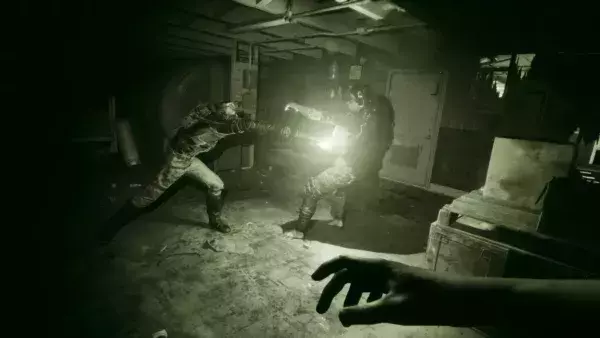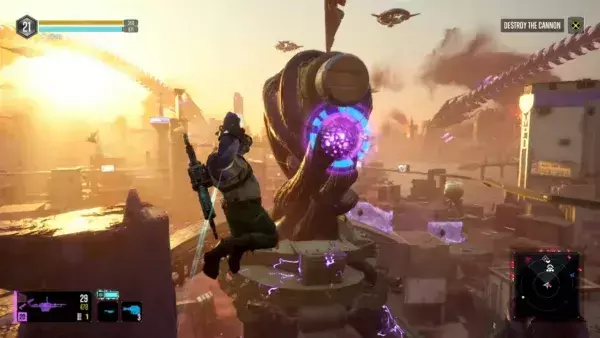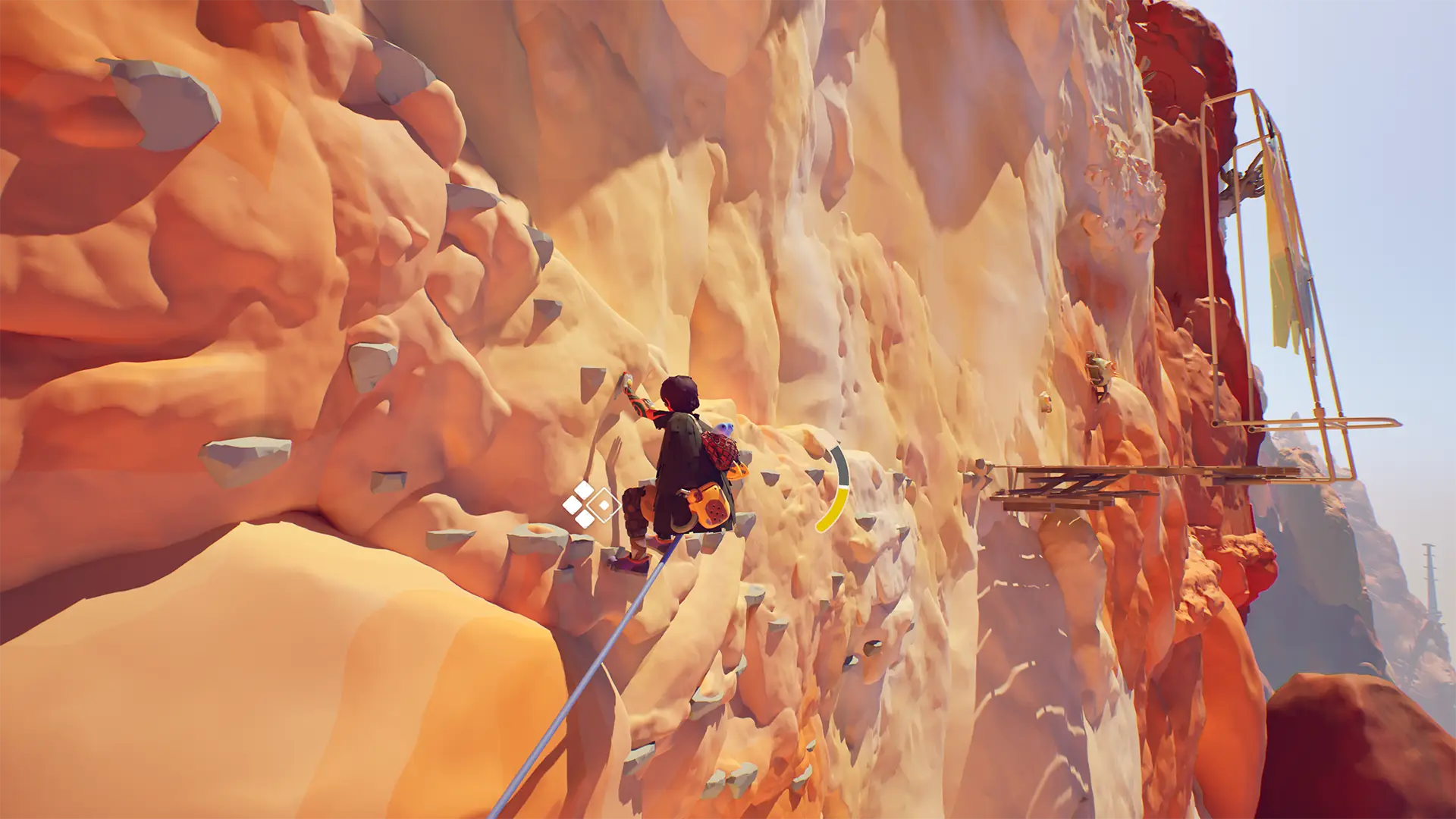
Don’t Nod offers more than just chill vibes with its upcoming climb-em-up, Jusant. We go hands-on with its first two biomes.
Climbing can be a perilous activity where the slightest slip or loss of stamina could see you plummeting to your doom. On the other hand, the solitude of the activity lends it a somewhat meditative atmosphere where it’s just you and the structure you’re clinging on to as you try to make your way up, and up, and up.
That chill vibe is what developer Don’t Nod leans on for its upcoming game Jusant, which takes place in a seemingly post-apocalyptic and abandoned setting. Interestingly, the title, which as explained from the outset is a French nautical term for a receding tide, gives a hint of the situation, where instead of rising sea levels, the tide seems to have gone down but the people who once inhabited a mysteriously tall tower have nonetheless taken to even higher ground – or, in fact, the skies. Your task, then – even though the how, what, and why isn’t communicated – is to climb the tower and figure out what’s happened.
I should add that despite the loneliness of the climb, with vistas sometimes giving breath-taking wide shots that makes me think of Ico, your young, intrepid climber isn’t actually alone, but also has an adorable creature in their backpack made entirely of water – though more on that later. Let’s get back to the climbing itself.
While players have already had a chance to sample Jusant’s gameplay from a demo released earlier this summer, with another demo now available until 19th September, I’ll go over the basics anyway. Climbing has a tactility to it, because while you still use the left stick to move, each hand is simulated with the left and right triggers as your hand reaches for the next available hold on a climbing surface, reinforced with haptics. Perhaps what adds to the gentleness of the activity compared to, say, the perilous antics of Nathan Drake is that it also considers climbing safety 101, so before you climb, you also have a carabiner attached to rope so that you won’t ever plummet to your death (breaking the spell somewhat, there are also invisible walls to the platforming, so you can’t just jump off a tall structure anyway).
On top of this, you also have access to a maximum of three pitons which can serve as sort-of checkpoints as you climb an especially large or tall surface. Placing a piton means you can safely release your grip and hang without having to climb all the way from the bottom. Most forgiving is how you’re able to make long climbs but still have the option to regain your stamina simply by staying still then holding in the left stick, while your character gives their arms a much-needed shake. While it’s true you don’t fully recover your whole bar of stamina this way, it’s still welcome compared to trying to recover the gauge as you do in a modern Zelda title or Genshin Impact.
Don’t Nod clearly understands that focusing on climbing could also run the risk of repetition (hello PSVR2’s Horizon Call of the Mountain) and cause discomfort with your trigger fingers. For instance, those pitons and carabiners can also be used with your rope to rappel up and down, the latter being a good trick for creating an arc that you can wall-run and perhaps use to reach another area, while your tools can also be used on ziplines as shortcuts. As I was able to play more of the game, I discovered that it’s once you awaken that watery creature in your backpack that things get really interesting.
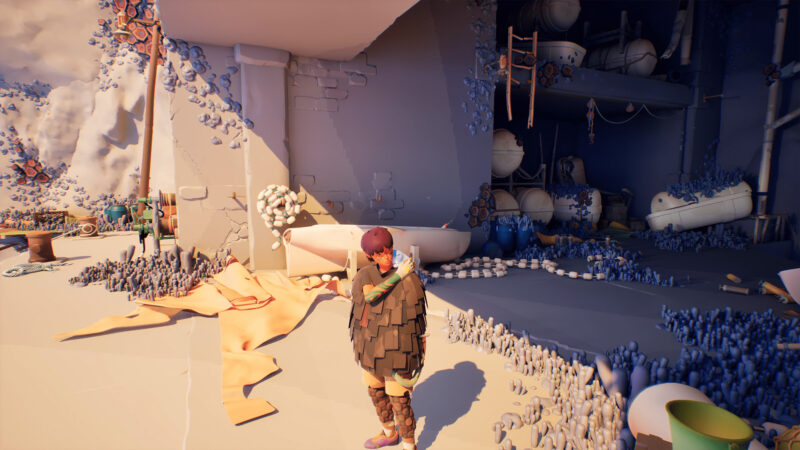
Credit: Don’t Nod.
While I won’t go into the specifics, this creature – known as a Ballast – is clearly attuned with nature. Tapping right on the d-pad, it emits a kind of sonar, showing you waypoints, but by tapping up, it’s also able to interact with local flora and fauna, creating new paths. For instance, I encounter a kind of plant growing on the wall of a tower, which with the Ballast’s power suddenly grows roots in its surrounding area that also act as grips I can use to climb.
There’s also a blue, tentacled plant growing along a wall which can be held onto. Using Ballast’s power, this plant then instantly stretches and grows, and if you’re gripping onto the plant already, it can carry you to your next destination. There’s a similar charm to be found in the fauna, when in a second, sunnier biome higher up, I run into what appear to be rock bugs slowly scaling a wall. Their grip on the wall is so sturdy that I can grab onto two bugs and have them carry me along the cliff.
This second biome does, however, also come with its own challenges, as the heat of the sun can also take a toll on your stamina – though your character also dons some pretty nifty sunglasses. That extra sunlight also means the roots that grow from one of those plants also shrinks away after a time, creating more urgency in climbing, even if it may undermine the chill atmosphere where you’re supposed to be able to take your time.
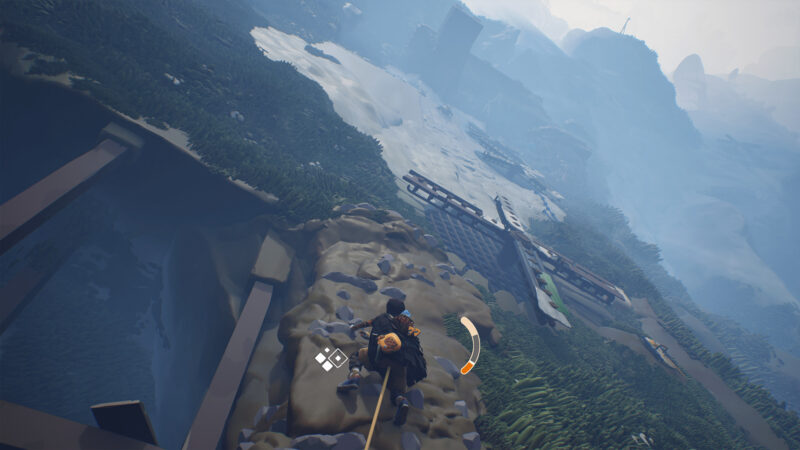
Credit: Don’t Nod.
Nonetheless, the warm palettes and atmospheric score – by Guillaume Ferran – means Jusant manages to maintain a fairly calm tone. Meanwhile, Don’t Nod takes a leaf from its own Life is Strange series with moments where, after interacting with some mysterious sea shells, the camera lingers on the scenery as you take a well-earned rest. It also helps that the game is free of dialogue, opting instead for wordless storytelling. I would have preferred more non-verbal environmental storytelling rather than the default of basically finding a lot of leftover logs and letters from the people who’ve since moved on as you journey up the tower, though I also came across some frescoes, too. In any case, it seems there’s enough secrets that encourage exploring while the climbing mechanics mean you can usually find more than one way up.
With an immensely stacked line-up of big, loud blockbusters jostling for our attention this October, Jusant has the potential to provide a serene escape from all the noise.
Jusant releases on PC via Steam, Xbox Series X/S (also on Game Pass), and PS5 on 3 October. A demo featuring the first 45 minutes of the game is available now on Steam until 19 September.


